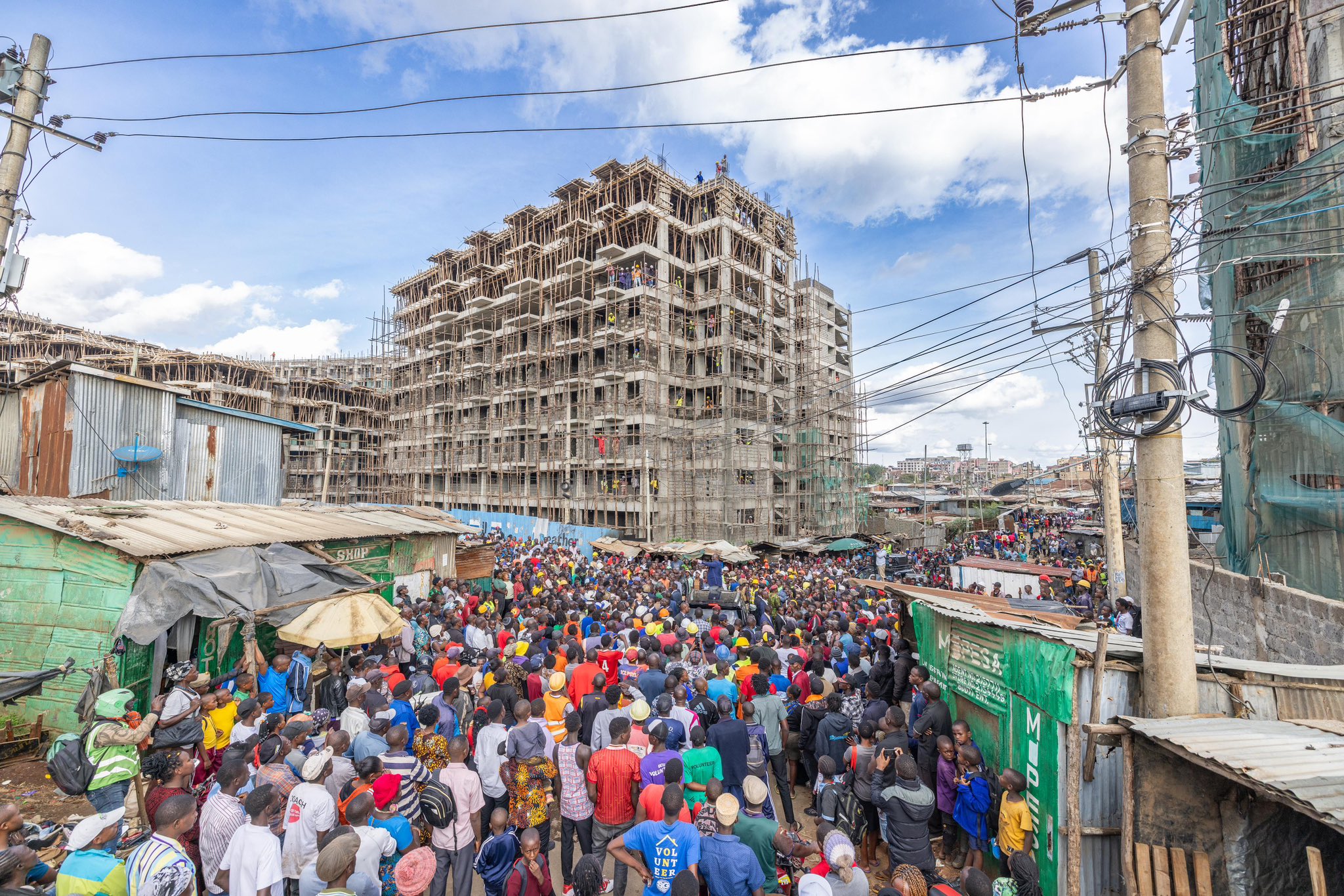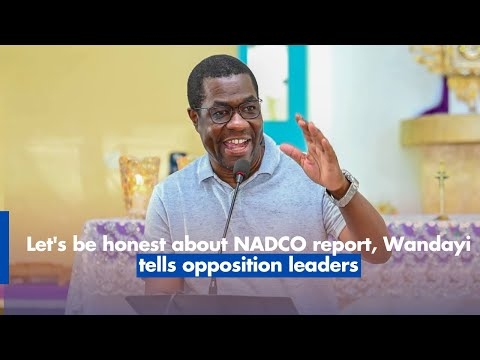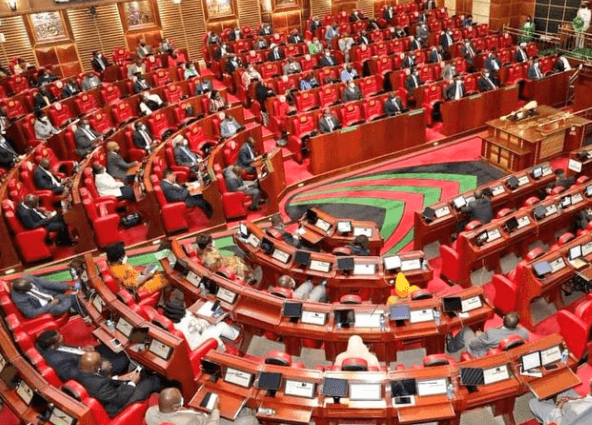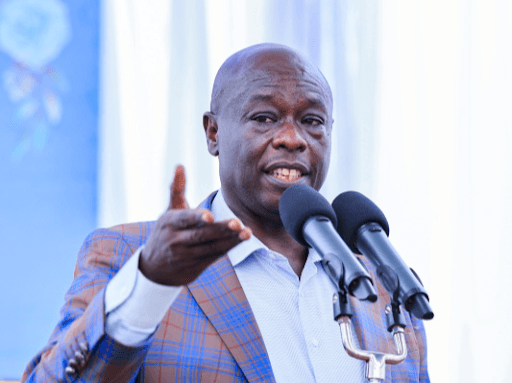 President William Ruto addresses a rally in Kibra, Nairobi on May 23, 2025/PCS
President William Ruto addresses a rally in Kibra, Nairobi on May 23, 2025/PCSPresident William Ruto has declared that his administration is committed to eradicating, not merely upgrading, the Kibra informal settlement in Nairobi in an effort to transform the area.
Speaking during a rally after the inspection of Soweto Affordable Housing in Kibra, Nairobi on Friday, May 23, 2025, Ruto emphasized that the plan to eradicate the informal settlement was to transform the place into an estate through the affordable housing initiative.
He said the government’s approach aims to offer residents dignified living conditions and sustainable solutions to urban poverty, rather than temporary fixes.
“We will not be upgrading this slum (Kibra), instead we will be eradicating it so that it is no more. And for those who doubted the government's affordable housing initiative, haven't we built the houses? Aren’t they progressing well?” he stated.
“And to change the face of the slum to an estate, you can see the changes evidently before you.”
He noted that the Soweto housing project had created employment opportunities for many youth.
The President stated that the enumeration process in Kibra’s Soweto C and D areas is in its final stages, with the aim of listing at least 11,000 residents.
He explained that those enlisted will receive a card as proof of residency, which will serve as a ticket to secure a house once the planned housing project is completed.
This move is part of the government’s broader plan to eradicate the Kibra slum and replace it with modern housing, ensuring that genuine residents are prioritised in the allocation of the new homes.
His inspection of the Soweto housing project comes days after he officially handed over 1,080 housing units to Mukuru Affordable Housing beneficiaries in Embakasi South.
The development, which sits on 56 acres of land, is Kenya’s largest affordable housing project to date, featuring a total of 13,248 residential units.
His remarks mark a significant policy shift from slum upgrading to a full-scale replacement, positioning housing as a cornerstone of Ruto’s urban development agenda under the bottom-up approach.















